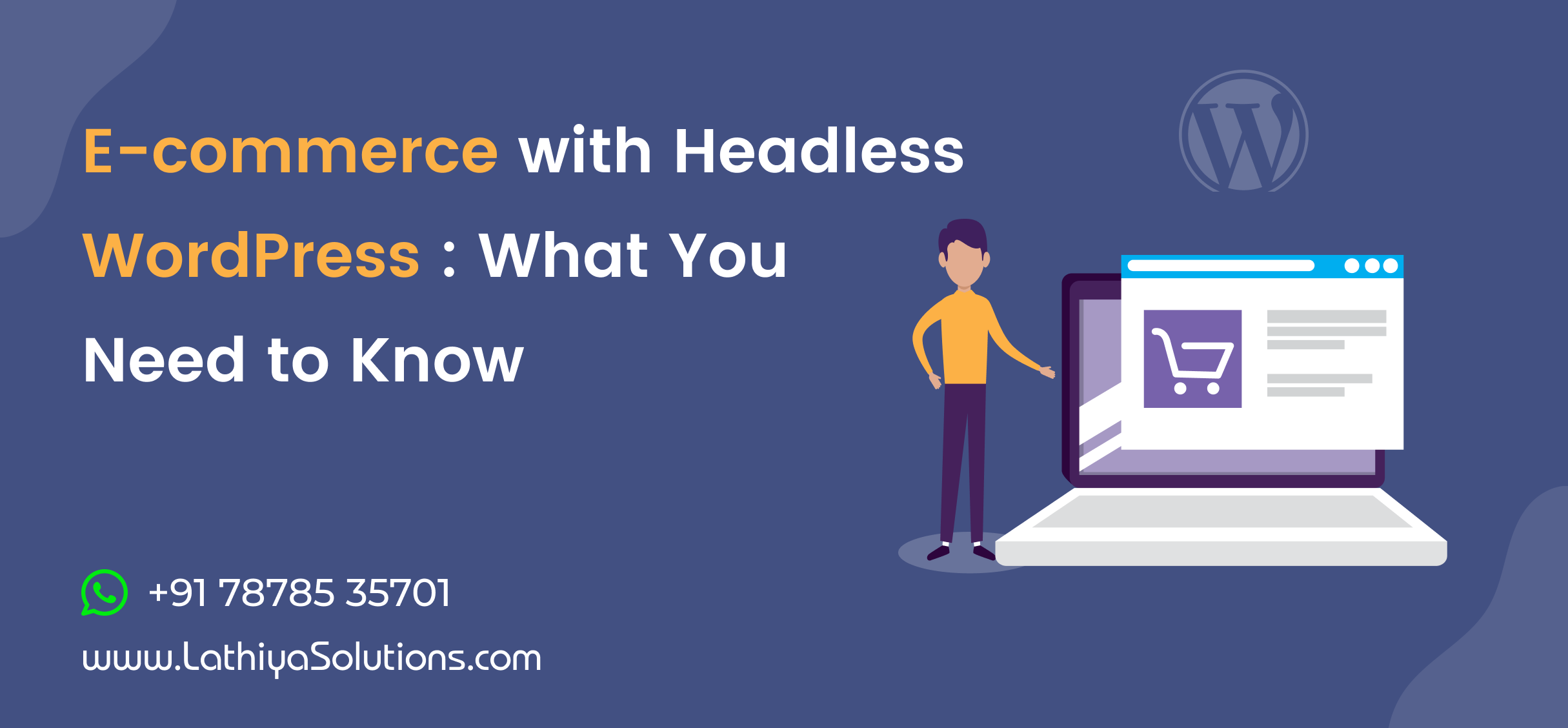As online shopping continues to grow, so do the platforms and technologies that power e-commerce experiences. Traditional WordPress sites, often built with WooCommerce, offer simplicity and flexibility. But when performance, scalability, and omnichannel delivery are top priorities, Headless WordPress is gaining ground as a powerful alternative.
In this post, we’ll explore what headless WordPress is, how it fits into the e-commerce landscape, and what you need to consider before building a headless e-commerce site using WordPress.
Whether you’re launching a new digital storefront or modernizing an existing one, it’s crucial to choose the right architecture from the start. Many businesses are now turning to headless setups to gain a competitive edge. If you’re exploring options, partnering with experts in eCommerce website development services can help bring your vision to life efficiently and effectively.
What Is Headless WordPress?
Headless WordPress separates the frontend (what users see) from the backend (where content is managed). WordPress remains the content management system (CMS), but the frontend is built with modern JavaScript frameworks like React, Vue.js, or Next.js and communicates with WordPress via APIs (usually REST API or GraphQL).
This decoupled approach is particularly beneficial for e-commerce because it offers flexibility, speed, and improved developer control.
Why Use Headless WordPress for E-commerce?
Let’s break down the key advantages:
1. Performance & Speed
- Headless front ends are often built using static site generators or optimized frameworks like Next.js or Gatsby.
- They allow faster load times and better Lighthouse scores, which are crucial for user experience and SEO.
2. Scalability
- Since the frontend and backend are decoupled, they can be scaled independently.
- You can serve content across multiple platforms (e.g., web, mobile apps, digital kiosks) from a single WordPress backend.
3. Custom UX/UI
- Developers aren’t limited by themes or PHP templating.
- Full control over the frontend enables building highly customized and interactive user experiences.
4. API-Driven Flexibility
- Combine data from multiple sources (e.g., WordPress, third-party APIs, ERP systems) in one frontend.
- Easily integrate advanced e-commerce features like personalization, real-time pricing, and customer dashboards.
Also Read: 12 Ways to improve a Product Landing Page
Plugins & Tools You Might Need
- WPGraphQL – Enables GraphQL for WordPress (great for structured and performant queries).
- WooCommerce REST API – Required to fetch product, order, and customer data from WooCommerce.
- ACF (Advanced Custom Fields) – Add custom metadata to products or pages.
- JWT Authentication for WP REST API – Secure API requests from frontend to backend.
Challenges to Consider
While headless offers flexibility, it’s not for everyone. Here are some key challenges:
1. Complexity
- Requires frontend development skills (React, GraphQL, etc.).
- Not as plug-and-play as traditional WordPress themes.
2. SEO Setup
- You’ll need to handle metadata, sitemaps, and canonical tags manually in your frontend.
- SSR (Server-Side Rendering) or SSG (Static Site Generation) frameworks like Next.js can help.
3. Plugin Compatibility
- Many WordPress plugins are designed for the traditional WP frontend and may not work out-of-the-box.
- Features like cart, checkout, and user authentication need to be rebuilt or re-integrated in the frontend.
When to Go Headless for E-commerce?
Consider going headless if:
- You want a lightning-fast, modern e-commerce experience.
- You’re building across multiple platforms (web, app, POS).
- Your team is comfortable with frontend frameworks.
- You need fine-grained control over design, UX, and performance.
Stick with traditional WordPress + WooCommerce if:
- You need a quick and simple store.
- You rely heavily on WordPress plugins that don’t support API usage.
- Your team is not familiar with JavaScript frameworks.
Real-World Example : Headless WooCommerce with Next.js
Imagine this flow:
- Products and categories are managed in WordPress via WooCommerce.
- The frontend, built with Next.js, fetches product data using the WooCommerce REST API.
- The checkout process is handled using a headless Stripe integration.
- The site is hosted on Vercel for fast global delivery.
The result? A highly performant, modern storefront that scales well and delivers a seamless UX.
Conclusion
Headless WordPress development offers a powerful way to supercharge your e-commerce site – unlocking better speed, flexibility, and modern development workflows. While it requires more technical effort, the benefits in performance, scalability, and user experience can be well worth the investment.
Whether you’re building a custom storefront or planning a future-proof e-commerce platform, headless WordPress deserves a place on your radar. To make the most of it, consider taking WordPress website development services that specialize in headless architecture and modern frontend technologies.
Read More Blogs:
